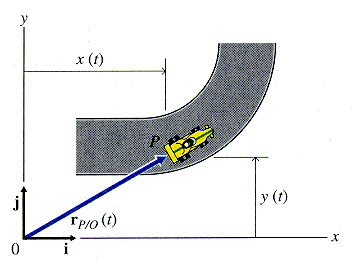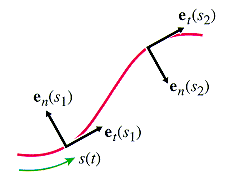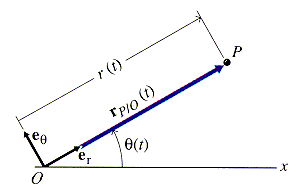Over the next three lessons, we will use three different coordinate systems to describe the position, velocity and acceleration of particles.
These coordinate systems (and typical problems) are:
(Today's Lesson) Rectangular Coordinates (x,y): Projectile Problems, x-y plotter problems, problems where x-y graph given.
(Next Lesson) Normal-Tangential Coordinates (n-t): A local coordinate system (attached to and moves with particle). Position vector is not defined. Often used in addition to any other coordinate system. That coord system is used to define the position of the particle. n-t coordinates are used to describe the velocity, and normal and tangential acceleration components.
(Third Lesson) Polar Coordinates (r-q): Complicated curves, parking lot ramps, etc.
Why use different coordinate systems?
No, it's not to make life difficult for dynamics students! It's
actually to make life easier for you. Some problems are much more
easily described in one particular coordinate system instead of another.
Rectangular Coordinates (x,y)

Normal/Tangential Coordinates (n,t)
(The s coordinate is a position along the curve. In n-t coordinates, many times you are just given a position, s, along a path, instead of a complete description of the entire path. The en and et vectors are unit vectors. Notice that et acts tangent to the curve, and en acts toward the concave side of the curve.)
 |
 |
 |
|
Polar (Radial/Transverse) Coordinates (r,![]() )
)
(The picture at right below is not necessarily a good example of polar coordinates. Radar tracking is actually a spherical coordinates problem, where r(t) is a distance, q(t) is elevation angle from the ground, and a third angle is the rotation in the horizontal plane. We will not discuss spherical coordinates in this class. You may breathe easier, now!)
 |
 |